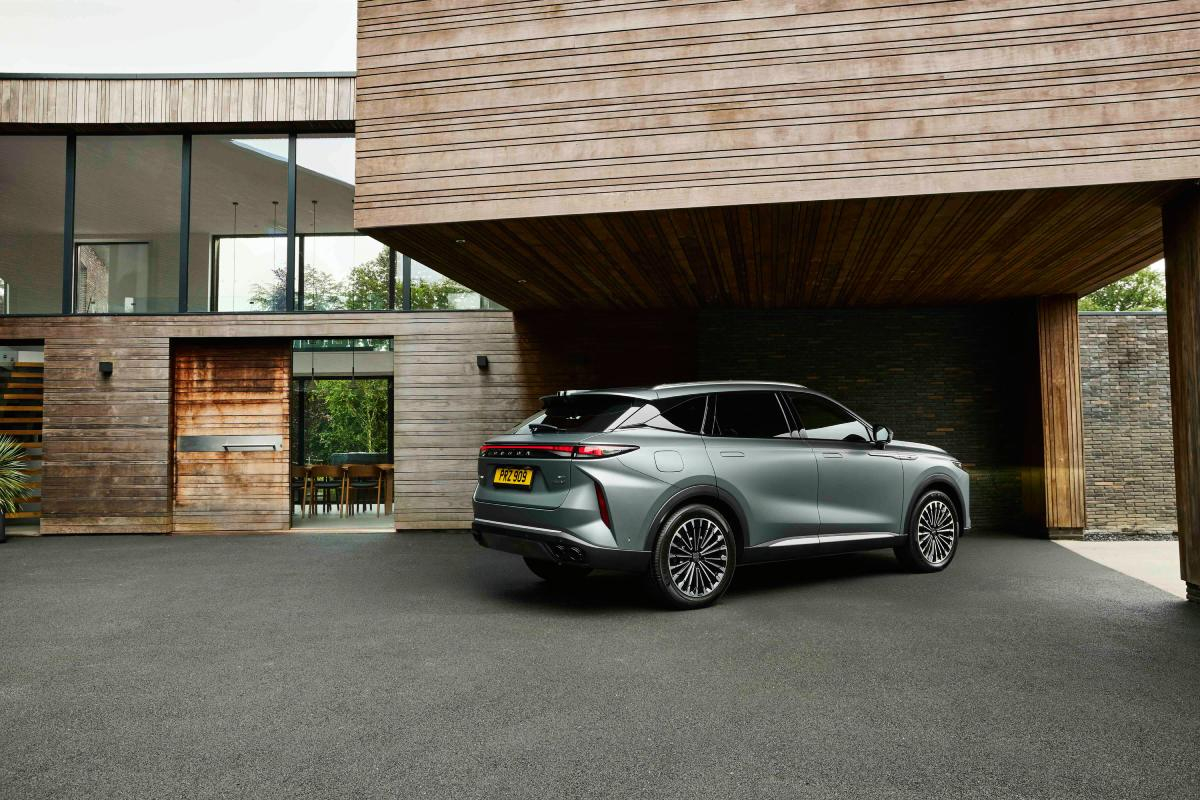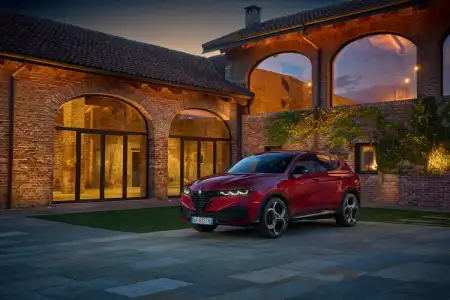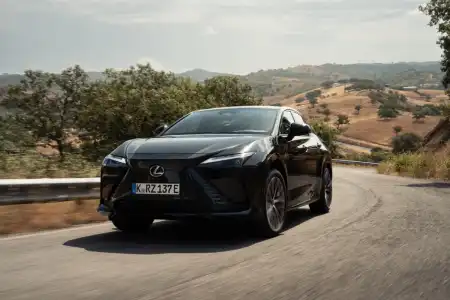- It’s refreshingly different
- The 9 has a spacious interior
- It’s powerful
- It would benefit from being cheaper to buy
- The driver’s display could be less cluttered
Introduction
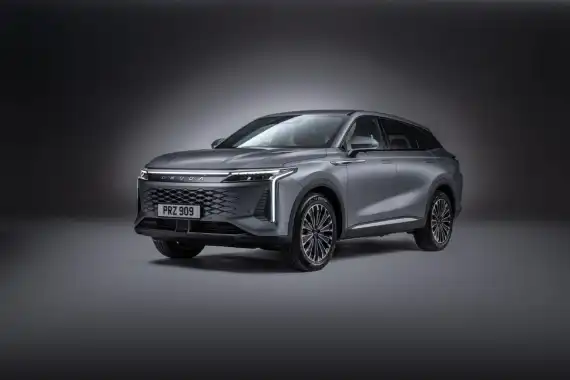
If you're not acquainted with Omoda, you might have missed the wave of Chinese car manufacturers breaking into the UK market lately, writes motoring journalist Tim Barnes-Clay.
Omoda is among a growing number of brands that have arrived within the past year or so, eager to take advantage of the evolving landscape within the automotive sector.
Some of these manufacturers are entirely fresh faces, while others boast a long-standing presence in the Eastern markets. Many come with unexpected beginnings, having initially dealt in video equipment or refrigerator components. This may lead you to presume they're just budget automakers churning out subpar vehicles. Still, these newcomers are serious, and their offerings present genuine, competitive alternatives to well-established marques.
Omoda has three SUVs available in the UK – the 5, 7, and the 9 (with the 5 also available as a visually similar electric variant known as the E5).
The 9, a plug-in hybrid, stands as the largest of the trio.
Omoda is positioning itself as a premium brand, which is a ‘big balls’ claim to make. After all, simply stating "we belong alongside Audi, Mercedes-Benz, and BMW" doesn't guarantee public trust. A reputation must be earned through merit and genuine quality.
Has Omoda done enough to justify its ambitions? We took one of its cars for a drive – in South Africa of all places - to find out.
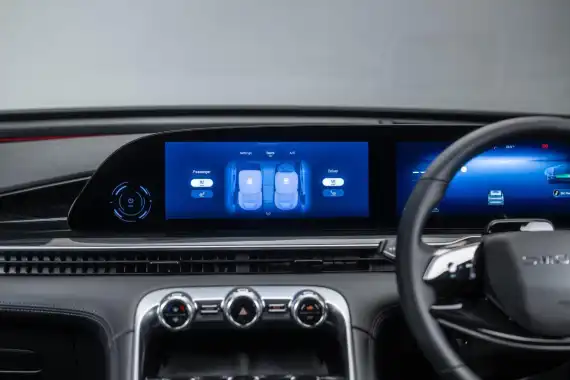
If you're already acquainted with Omoda's existing models, the overall silhouette of the 9 will feel quite recognisable, although it presents its own unique characteristics.
At the front, you'll find a prominent lattice grille, flanked by substantial air intakes. The daytime running lights extend down into two vertical strips of bodywork that reach the far edges of the front.
There is also a considerable amount of cladding below, and the wheel arches are accentuated by sculpted lines, coupled with a notable groove towards the lower part of the doors.
From a side perspective, the distinct slope of the roofline is evident, stretching down to the bottom of the rear windscreen.
At the rear, the taillights are joined by a horizontal light bar featuring the name 'OMODA' positioned beneath it. There is a designated indentation for the number plate in the centre, and a mostly unadorned area below. The cladding peaks right below the tailgate, complemented by protective bodywork at the bottom.
The sides of the 9 also feature a bulge, accommodating a pair of rear foglamps.
From some angles, there are resemblances to the Range Rover Evoque and Velar, although the Omoda is more angular and defined. Subtle hints of the Lexus RX can also be seen, particularly around the grille.
The interior of the Omoda 9 impresses with its distinctly premium atmosphere. It features a striking flat-bottomed steering wheel, designed with double spokes positioned between 3 and 9 o’clock.
Incorporated into the steering wheel are haptic touch buttons that create a tactile ‘clicking’ sensation at your fingertips, providing a realistic feel even though they don’t physically depress when pressed.
The centre console rises gracefully to connect with the dashboard, giving you a cocooned sensation. This area is accented with elegant silver décor that sweeps around three dials on the dashboard.
This enclosed vibe is further enhanced by a cockpit-style dashboard, dominated by an expansive unit that houses both the infotainment screen and the digital instrument display.
The 12.3-inch infotainment screen impresses, offering high-res visuals, cool graphics, and an interface that responds promptly to your inputs. However, the menu layout is rather complex, with some icons being small and challenging to select while driving.
Adjacent to it, the digital driver’s display provides crisp graphics.
At first, we were worried that the detailed system might hide the air conditioning controls within the touchscreen. Our initial concerns were unfounded. The car's temperature can be tweaked using dials on the dashboard, which is loads more convenient than using a distracting touchscreen.
On The Road
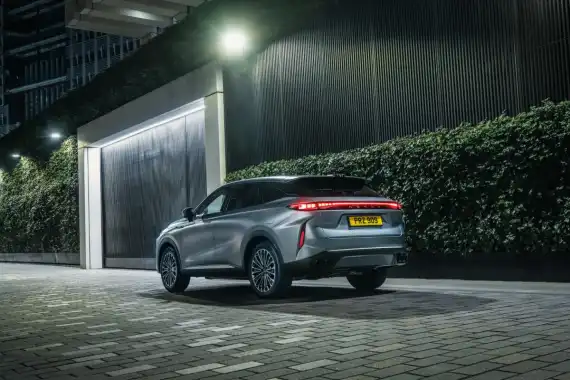
Handling & Performance
The 9 boasts impressive power, achieving 0-62 mph in just 4.9 seconds.
This level of acceleration is fab for an SUV of its size, making it feel nimble. The all-wheel-drive system provides a sense of confidence, whether you're merging onto a motorway or overtaking, with ample capability still at your disposal.
Although it features a three-speed transmission known as Dedicated Hybrid Transmission (DHT), don't let this deter you. The shifting is smooth, seamless, and virtually silent, so the limited number of gears is less of a concern than you might expect. When you press the accelerator, the power comes on quickly and without delay, propelling the car forward with impressive speed.
Regardless of the driving setting selected, once the battery reaches 20 per cent capacity, the engine activates to recharge itself, ensuring the vehicle remains efficient. This clever system means that you're not solely reliant on the engine, and its operation is so subtle that you hardly notice when it kicks in.
Overall, the driving experience is exceptionally refined from a powertrain perspective. At lower speeds, the Omoda 9 is generally comfy and at higher speeds, the vehicle glides smoothly along well-maintained motorways and is cushioning on uneven rural surfaces or urban tarmac.
The steering, along with the suspension and brakes, can be adjusted based on your selected driving mode via a dashboard switch, with additional modifications accessible through the infotainment touchscreen.
The steering feels light and remains accurate enough to give you confidence in positioning the Chinese vehicle effectively. While the handling is decent, the body leans a bit when navigating faster bends – but it’s not meant to be a sports car – and does an impressive job for a fairly heavy vehicle.
Overall, Omoda has made commendable strides with this model.
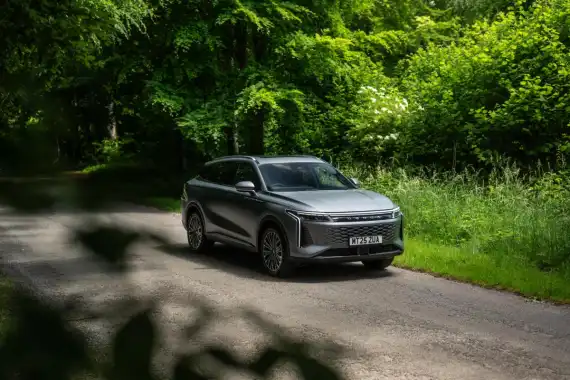
Space & Practicality
Achieving a comfortable driving position is straightforward, courtesy of the six-way electric adjustment in the driver's seat, while the front passenger seat benefits from a four-way electric adjustment.
You will find the seats to be plush and soothing, ensuring a pleasant experience even over long journeys. There is a lot of legroom and headroom for front and rear passengers.
The expansive centre console adds to the comfort, allowing you and your front passenger to enjoy your space without feeling cramped.
The generous roominess also extends to the back seats. Despite the sloping roofline, there's decent headroom, which is enhanced by the panoramic roof that provides a bit of extra vertical space due to its higher positioning.
Rear passengers can expect plenty of legroom, making it comfortable for even taller adults without feeling confined.
Visibility from the front is quite good, thanks to the sloping windscreen and relatively slender pillars. However, the rear pillars are noticeably thicker, which is exacerbated by the prominent black borders surrounding the small third window behind the C-pillar. Nevertheless, front and rear parking sensors help, along with what Omoda refers to as a '540-degree' camera.
The boot capacity stands at 660 litres, more than sufficient for most rivals, although a few still boast larger spaces.
When the rear seats are folded down in a 60:40 split, the capacity expands to 1,783 litres – which is ace.
Ownership
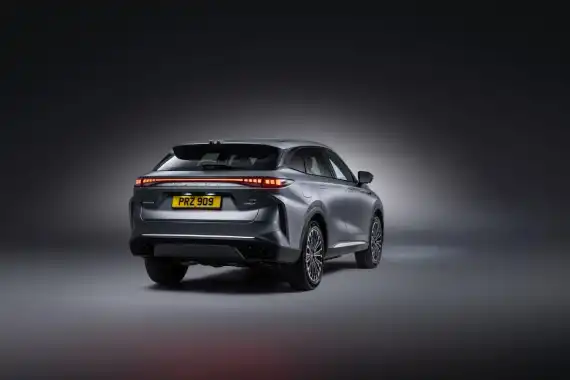
Running Costs
The Omoda 9 boasts a maximum DC charging capacity of 70kW, allowing a 30-80 per cent charge to be completed in just over 20 minutes. If you opt for a 7kW wallbox, expect to take around five hours to fully charge from empty to 100 per cent.
With a fully charged battery, the Omoda 9 can deliver up to 201.8mpg; however, you may see figures closer to 40-45mpg when the battery is depleted. It emits 38g/km of CO2, and with an official electric range of 93 miles, the Omoda 9 PHEV qualifies for the 5 per cent band for Benefit-in-Kind tax. This makes it an appealing selection for company car users, although fully electric vehicles enjoy even more favourable treatment from HM Revenue & Customs.
However, be aware that road tax will be quite substantial since its list price exceeds £40,000, meaning the Expensive Car Supplement is applicable. In practical terms, this results in an additional £425 per year from years two to six, on top of the standard £195 road tax, while the first year costs £110. The supplement, commonly referred to as the 'luxury car tax', is currently under review, but the Government has yet to announce any adjustments to the £40,000 threshold.
Verdict
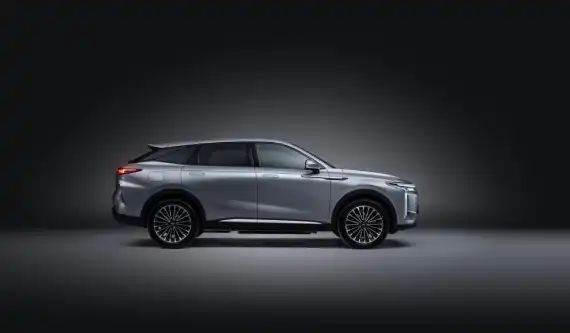
When evaluated on its own terms, the Omoda 9 makes a compelling case for purchase or lease.
It boasts an impressive range of features, delivering robust performance along with an outstanding all-electric range and excellent fuel efficiency. The interior combines sophistication with practicality, providing ample cabin space and a generous boot.
While its handling may not be quite as sharp as more established premium brands, it still offers a really comfortable ride. The infotainment system, while visually striking, may require a bit of familiarisation, but this can be said for many other systems in cars - and doesn't detract from the overall experience.
Importantly, the Omoda 9 is also considerably more affordable than its premium foes. It does compete with well-priced PHEV options from brands such as Hyundai and Kia, yet it stands out with a level of luxury that many non-premium alternatives simply don't offer.
For those seeking a stylish and opulent vehicle, the Omoda 9 may be the ideal choice, allowing you to confidently consider it over more traditional German brands.
